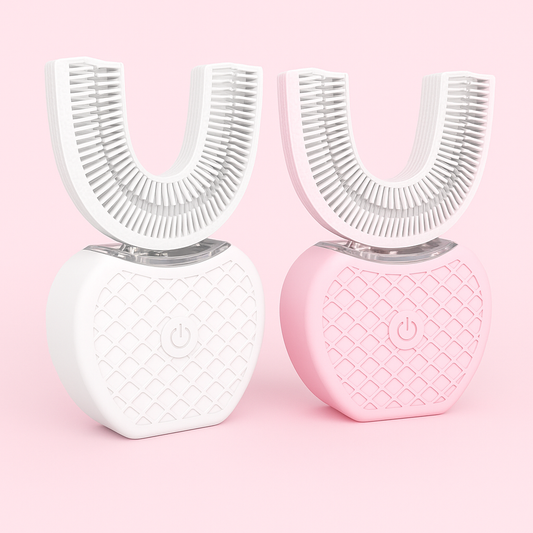Introduction: Rethinking daily defense for a brighter smile in 2025
More people are exploring alternative toothpaste formulas that avoid fluoride while still delivering whitening benefits and strong long-term oral health. Two ingredients often highlighted in these formulas are niacinamide (vitamin B3) and xylitol. When combined in a thoughtfully formulated product and paired with an effective oral-care routine, these actives can help reduce surface stains, support gum health, and contribute to a brighter-looking smile over time.
This comprehensive guide explains how niacinamide and xylitol work, what realistic whitening outcomes to expect, how a fluoride-free approach compares to fluoride-inclusive care, and how to choose and use products safely and effectively. Strategic product links to trusted suppliers are included for convenience.
Quick overview: What niacinamide and xylitol are and why they matter
- Niacinamide (vitamin B3): An anti-inflammatory, barrier-supporting nutrient widely used in topical skin and mucosal care. In oral formulations, it may help calm gingival inflammation, support mucosal resilience, and indirectly improve the visual contrast between gums and teeth.
- Xylitol: A natural sugar alcohol used as a sweetener that also has well-documented anticaries effects. Xylitol reduces carriage of Streptococcus mutans, increases salivary flow, and helps neutralize acid produced by oral bacteria — all important for preserving enamel and reducing discoloration from decay.
How whitening works: surface vs. intrinsic stains
Understanding stain types clarifies what toothpaste can and cannot do:
- Surface stains: Caused by coffee, tea, red wine, smoking, and food pigments. These are the easiest to address with abrasives, polishing agents, enzymes, and regular cleaning.
- Intrinsic stains: Within the tooth structure (tetracycline staining, fluorosis, aging-related darkening). These generally require professional bleaching or restorative treatments to significantly change.
Fluoride-free niacinamide + xylitol toothpastes primarily help with surface stain control and prevention of new discoloration by reducing plaque, improving gum health, and preserving enamel. They are not the same as peroxide-based bleaching agents used in clinical whitening.
Mechanisms: How these ingredients support whitening and oral health
- Surface stain removal and prevention: Many modern toothpastes combine mild abrasives (hydrated silica, calcium carbonate) with polishing agents. These mechanically lift stains. Xylitol reduces the biofilm that traps pigments, making brushing and polishing more effective.
- Gum and mucosal health: Niacinamide's anti-inflammatory properties can reduce gingivitis and swelling. Healthier gums expose more tooth surface and create a cleaner contrast, making teeth appear whiter.
- Enamel preservation: Xylitol supports a less acidic oral environment and stimulates saliva, which contains minerals that help remineralize enamel. Preserved enamel keeps teeth reflective and less prone to staining.
- Reduced decay and discoloration: By lowering cavity risk, xylitol helps prevent the dark spots and structural discoloration caused by untreated decay.
Clinical evidence and real-world data (what studies show)
Xylitol's anticaries benefits have been demonstrated across multiple clinical studies and systematic reviews, particularly when used regularly in gum, lozenges, or as an ingredient in oral care products. Evidence for niacinamide in oral formulations is smaller but growing; its anti-inflammatory benefits are established in other mucosal and dermatologic contexts and are biologically plausible when applied in the oral cavity.
Note: Most toothpaste-level studies focus on plaque and gingival indices, bacterial counts, and caries incidence rather than dramatic whitening outcomes. Whitening results reported with these products are generally gradual and tied to improved plaque control and stain prevention rather than peroxide-like shade shifts.
Fluoride-free vs. fluoride toothpaste: pros and cons
- Fluoride toothpaste (pros): Strong, evidence-based protection against caries; proven to strengthen enamel and reduce cavity progression.
- Fluoride toothpaste (cons): Concerns about ingestion in young children; some consumers prefer alternatives for personal or health reasons.
- Fluoride-free toothpaste (pros): Avoids fluoride ingestion risk, useful for those with specific health guidance or preferences; formulations can still support whitening through abrasives, enzymes, niacinamide, xylitol, and polishing agents.
- Fluoride-free toothpaste (cons): May offer less proven protection against caries for high-risk individuals; not recommended as the primary defense for people with multiple cavities or active decay unless guided by a dentist.
Bottom line: For most people, fluoride remains a cornerstone of caries prevention. If you choose fluoride-free products, do so with a prevention plan that includes xylitol-containing products, rigorous hygiene, diet control, and regular dental care.
Daily defense routine: detailed step-by-step plan
Follow this routine to maximize whitening and oral-health benefits while using a niacinamide + xylitol fluoride-free toothpaste.
-
Morning:
- Brush for two minutes using a soft-bristled brush and your niacinamide + xylitol toothpaste.
- Floss or use interdental brushes to remove interproximal plaque.
- Rinse with a xylitol-containing mouth rinse or an alcohol-free mouthwash to extend the protective window.
-
After meals (if practical):
- Rinse your mouth with water or chew sugar-free xylitol gum after sugary or staining meals to stimulate saliva and reduce plaque acidity.
-
Evening:
- Brush for two minutes before bed with your toothpaste to remove daily pigments and bacterial film.
- Clean between teeth; consider a final rinse with a xylitol rinse if recommended.
-
Weekly/Monthly:
- Use an at-home polishing or enzymatic toothpaste occasionally for deeper stain management if sensitivity is not an issue.
- Schedule professional cleanings every 6–12 months; more often if you are prone to heavy staining or periodontal disease.
How to select the best fluoride-free niacinamide + xylitol toothpaste
Use this checklist when shopping:
- Active ingredients: Check for niacinamide and xylitol listed near the top of the ingredient list.
- Abrasivity: Look for products with moderate RDA (Relative Dentin Abrasivity) to balance stain removal and enamel preservation. Avoid high-RDA products for daily use.
- Additional actives: Mild polishing agents, enzymes (like papain), zinc salts, or pH buffers add value.
- Claims & evidence: Favor products with clinical data or third-party testing when possible.
- Formulation: Age-appropriate formulations for children; avoid strong flavors or alcohol-based mouthwashes if you have sensitivity.
Shopping keywords and SEO-focused product searches
To find suitable options online, use targeted keywords that match buyer intent. Examples include:
- good whitening toothpaste
- toothpaste without fluoride
- toothpaste with xylitol
- best toothpaste for whiter teeth
- fluoride toothpaste free
- Other useful searches: "toothpaste that whitens teeth", "toothpaste whitening best", "toothpaste for whitening teeth"
Using these keyword phrases in search engines or shopping platforms helps surface curated product pages and user reviews. For a curated selection of fluoride-free and xylitol-containing toothpastes, see product lines at Havana Body.
Comparing whitening approaches: toothpaste vs. professional bleaching
- Toothpaste (niacinamide + xylitol): Gradual improvement in surface stain control, plaque reduction, and gum health. Best for daily maintenance and prevention.
- Professional bleaching: Uses higher-concentration peroxide under dental supervision for dramatic shade changes. Often combined with veneers, bonding, or microabrasion for intrinsic or severe stains.
- Smart strategy: Use a maintenance toothpaste daily to preserve whitening results after a professional treatment — this reduces the need for frequent touch-ups.
Common questions (FAQs)
- Will a niacinamide + xylitol toothpaste whiten my teeth instantly? No. Expect gradual improvements in surface stain reduction and gum health. Instant dramatic shade changes require peroxide-based bleaching.
- Is xylitol safe? Yes for most people in toothpaste and chewing gum amounts. Large oral ingestion can cause digestive upset in some individuals. Keep xylitol products away from dogs (toxic to pets).
- Can children use fluoride-free toothpaste? Children under 6 should use a pea-sized amount of low-fluoride toothpaste if recommended by their dentist; if you prefer fluoride-free, discuss this with your pediatric dentist to ensure appropriate caries prevention.
- Does niacinamide cause irritation in the mouth? Most people tolerate low-percentage niacinamide well. If you develop persistent irritation or sensitivity, stop use and consult your dentist or physician.
Myths and misconceptions
- Myth: "Fluoride-free equals unsafe." Not always. Many well-formulated fluoride-free products can support oral health for low-risk individuals, but fluoride remains the most evidence-based anti-caries agent for high-risk patients.
- Myth: "Xylitol will whiten like peroxide." Xylitol prevents new staining and helps maintain enamel health, but it does not actively bleach teeth like peroxide.
- Myth: "More abrasive = better whitening." High-abrasivity can remove stains but also wear enamel and increase sensitivity; moderation is key.
Safety tips and when to see a dental professional
- Stop any product that causes persistent burning, swelling, or bleeding and consult a dentist.
- If you have a history of cavities, active decay, or enamel erosion, discuss fluoride usage before switching to fluoride-free toothpaste.
- Use age-appropriate formulations for children and supervise brushing to minimize ingestion.
Post-whitening maintenance plan
After professional whitening, maintain results by:
- Using a gentle niacinamide + xylitol toothpaste daily to control plaque and reduce relapse from staining.
- Limiting staining foods and drinks (coffee, red wine, dark sauces) or rinsing after consuming them.
- Chewing sugar-free xylitol gum after meals to stimulate saliva and neutralize acid.
- Scheduling periodic touch-ups with home trays or in-office treatment as recommended by your dentist.
Advanced: reading labels and understanding ingredient lists
When you open a toothpaste tube, look for:
- Active ingredient section for niacinamide and xylitol.
- The abrasive listed (hydrated silica, calcium carbonate) and any statement of RDA if available.
- Added antimicrobials or desensitizers like potassium nitrate (for sensitivity) or zinc citrate (to control odor and biofilm).
- Absence of unnecessary harsh chemicals if you have sensitivities (strong alcohols, high-concentration abrasives, or strong flavors).
Who benefits most from fluoride-free niacinamide + xylitol formulas?
- Adults with low-to-moderate caries risk seeking a natural-feeling formula and mild to moderate whitening through stain control.
- People with mild gingival inflammation who want a toothpaste that supports gum health.
- Consumers who prefer to avoid fluoride for personal or medical reasons and are committed to strong hygiene and regular dental care.
Who should not rely solely on fluoride-free toothpaste?
- Children at high risk of decay (unless supervised by a dental professional), people with active cavities, and those with severe enamel erosion should not replace fluoride without professional guidance.
Travel and on-the-go tips
- Carry a small tube of your regular niacinamide + xylitol toothpaste for daily maintenance after flights or long trips when diet and routine are disrupted.
- Pack sugar-free xylitol gum to use after meals when brushing isnt possible.
Sample comparative routine for different goals
- Maintenance and prevention: Twice-daily brushing with niacinamide + xylitol toothpaste, daily interdental cleaning, xylitol gum after meals, professional cleaning every 6–12 months.
- Cosmetic whitening maintenance: Professional whitening every 1–2 years (as recommended) + daily niacinamide + xylitol toothpaste to preserve results.
- High caries risk: Discuss fluoride options with your dentist; if fluoride-free is chosen, increase preventive steps: more frequent recalls, high-xylitol adjuncts, and targeted dietary changes.
Additional resources and credible reading
For evidence-based articles on xylitol and fluoride, consult peer-reviewed dental journals and professional dental association guidance. Your dentist can interpret literature for your specific needs and risk profile.
Conclusion: Integrating a fluoride-free niacinamide & xylitol toothpaste into a long-term oral health plan
Fluoride-free toothpaste formulas that include niacinamide and xylitol can be an effective part of a daily defense routine focused on reducing surface stains, supporting gum health, and maintaining enamel integrity. While these formulas are not substitutes for professional peroxide whitening when dramatic shade changes are desired, they help prevent new staining and preserve the results of cosmetic treatments. For high caries risk individuals, fluoride remains the standard of care and any switch should be made under dental guidance.
If youre ready to explore curated products that match the keywords shoppers trust — from "toothpaste without fluoride" to "toothpaste with xylitol" and "best toothpaste for whiter teeth" — check out specialized selections available at Havana Body. Find targeted options such as toothpaste whitening best, good whitening toothpaste, and fluoride toothpaste free to test what works for your routine.
Ready to upgrade your daily defense routine? Visit Havana Body to browse fluoride-free, xylitol-containing, niacinamide-enhanced toothpaste options and choose the best toothpaste for whiter teeth that fits your oral-health goals.


